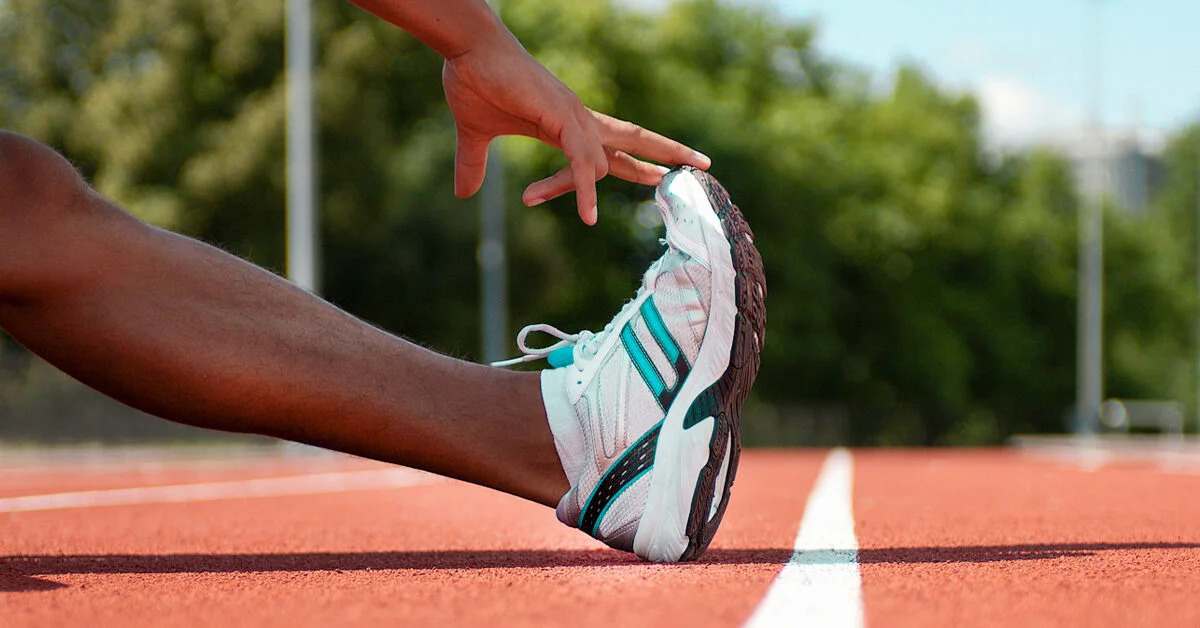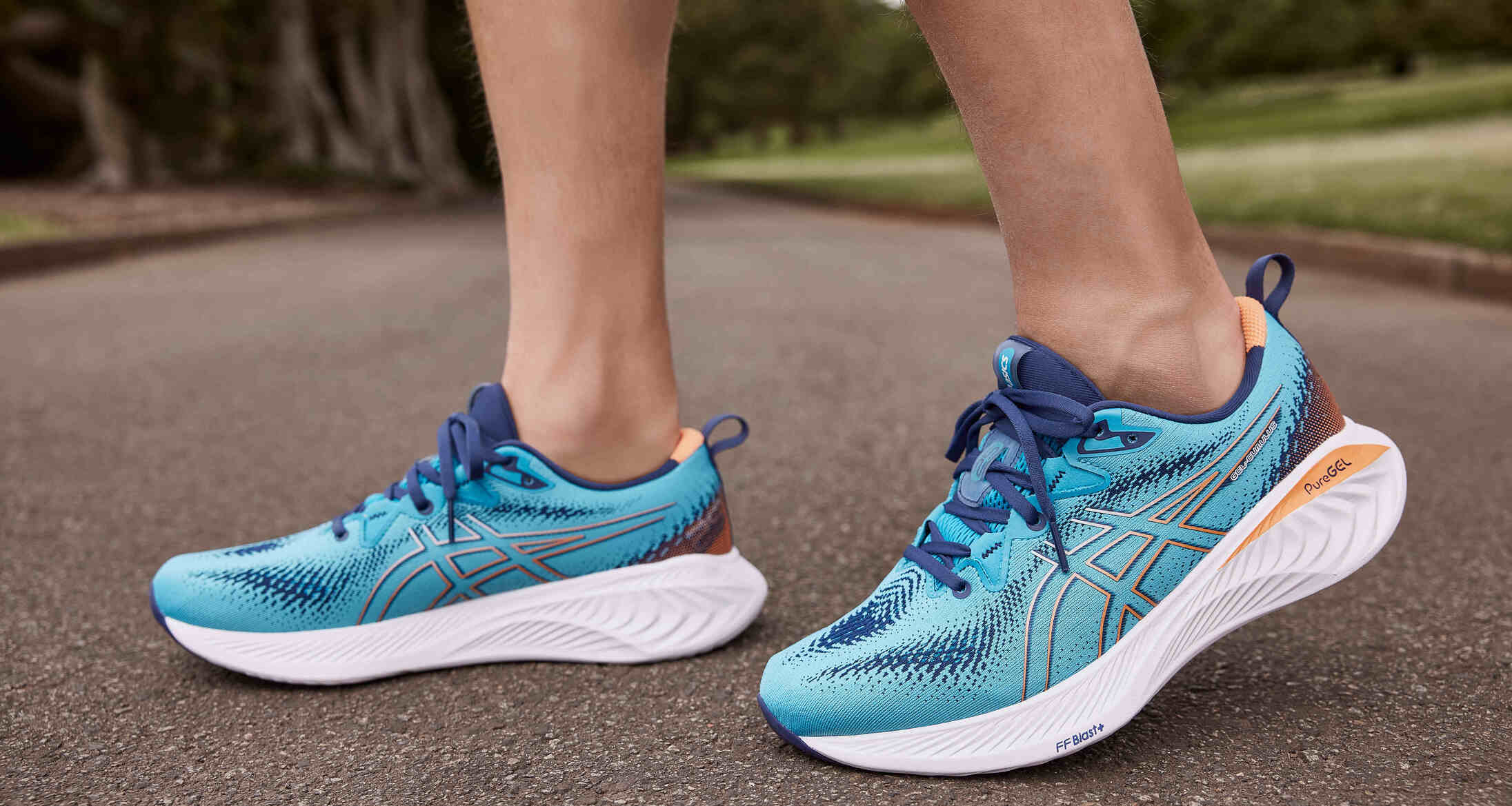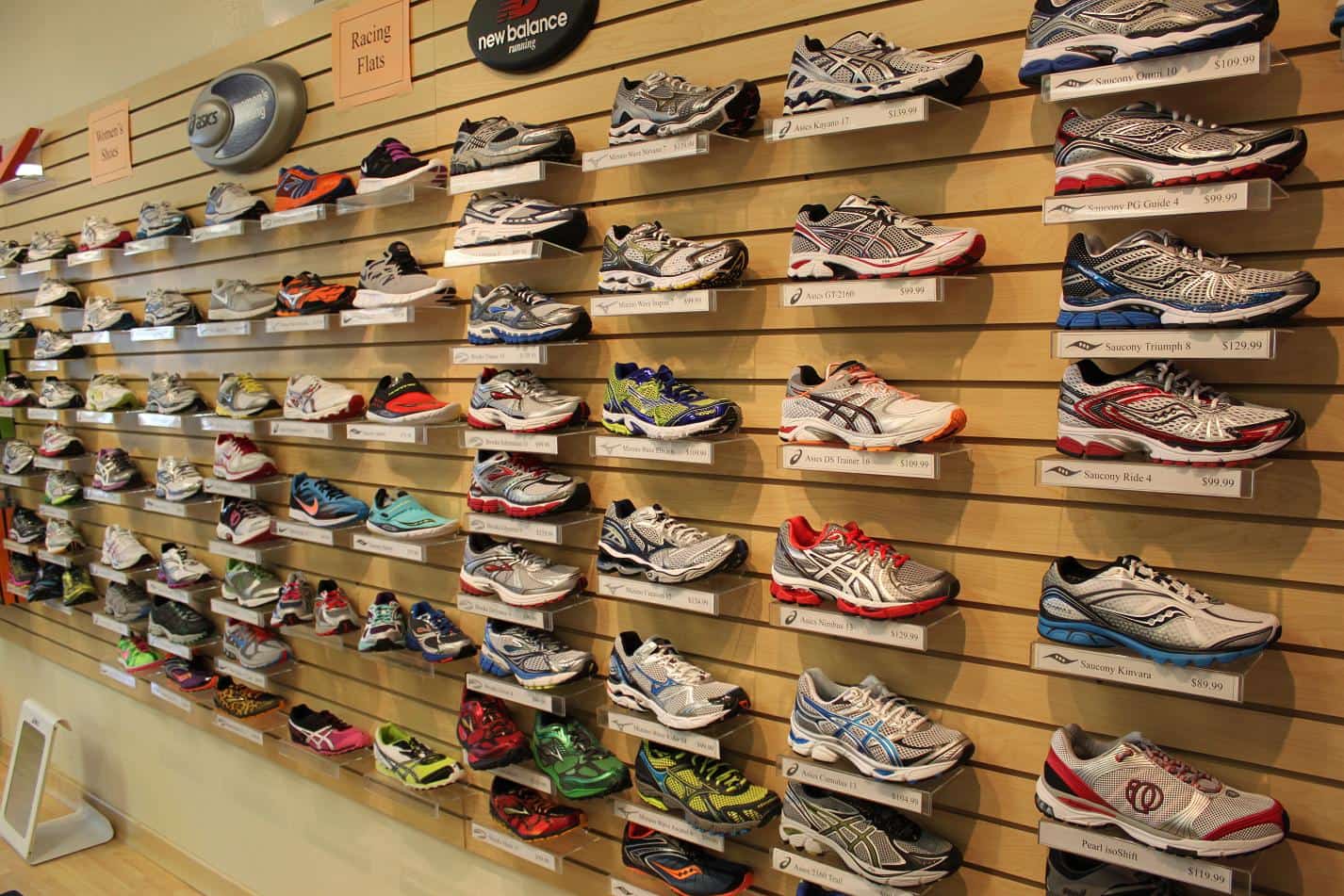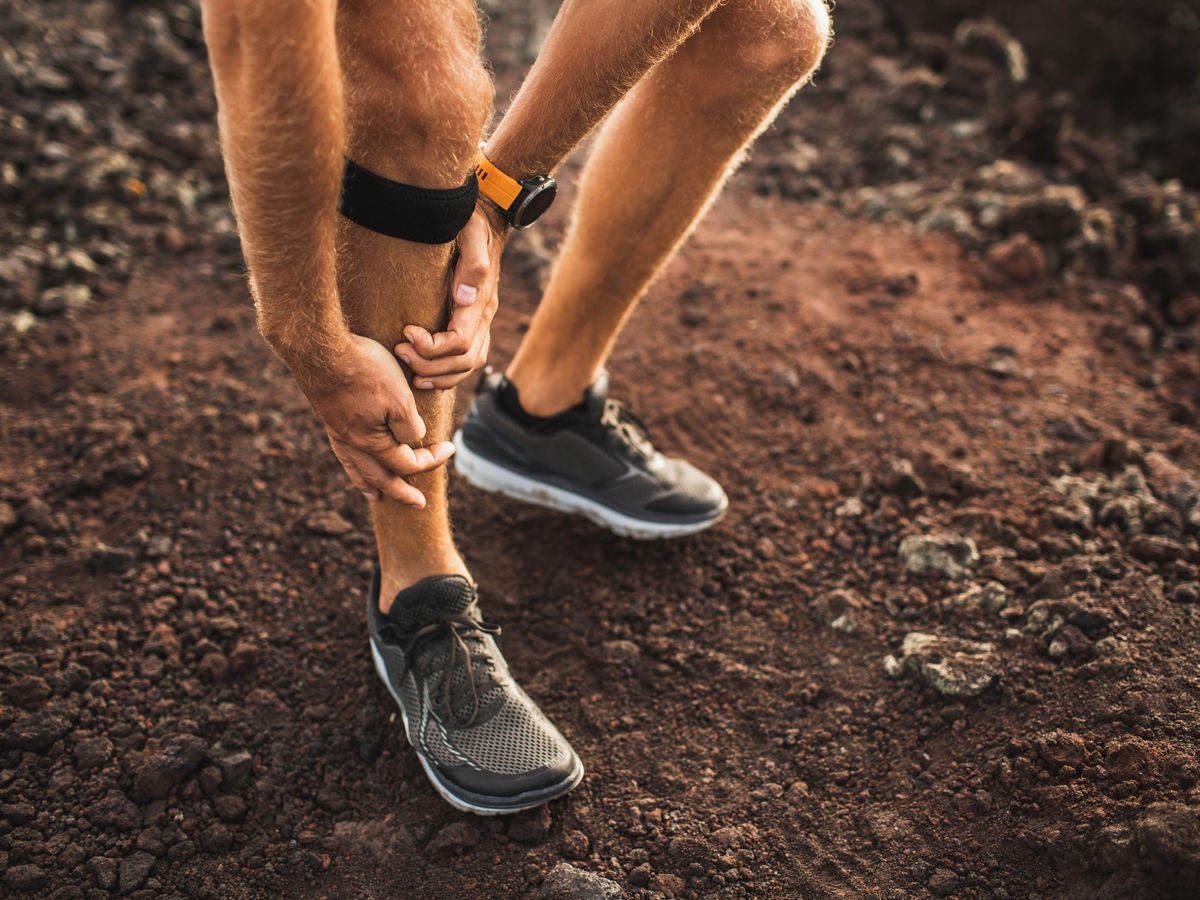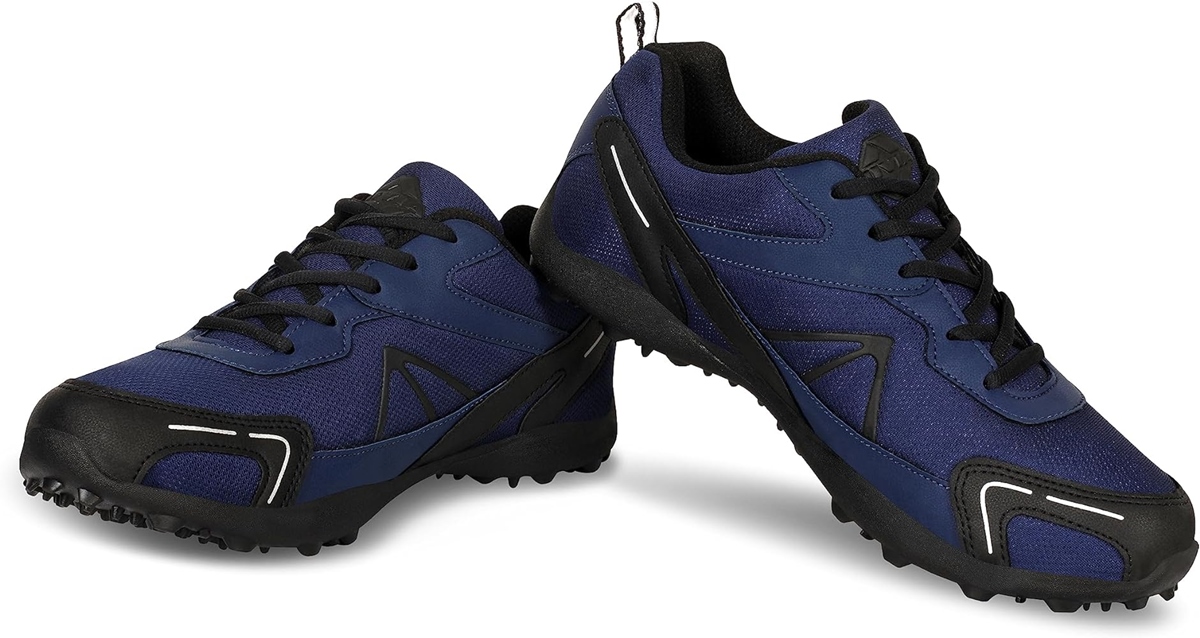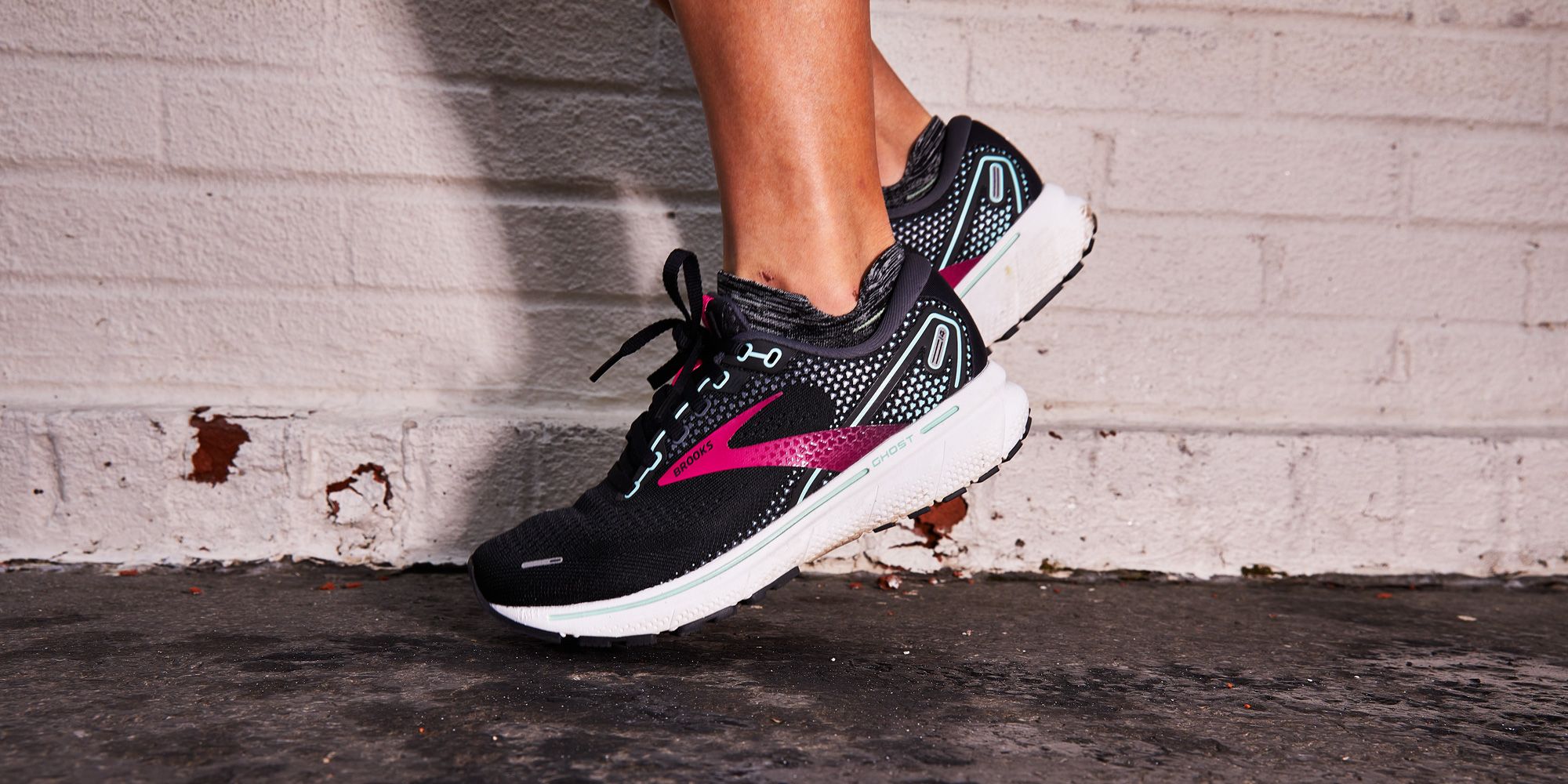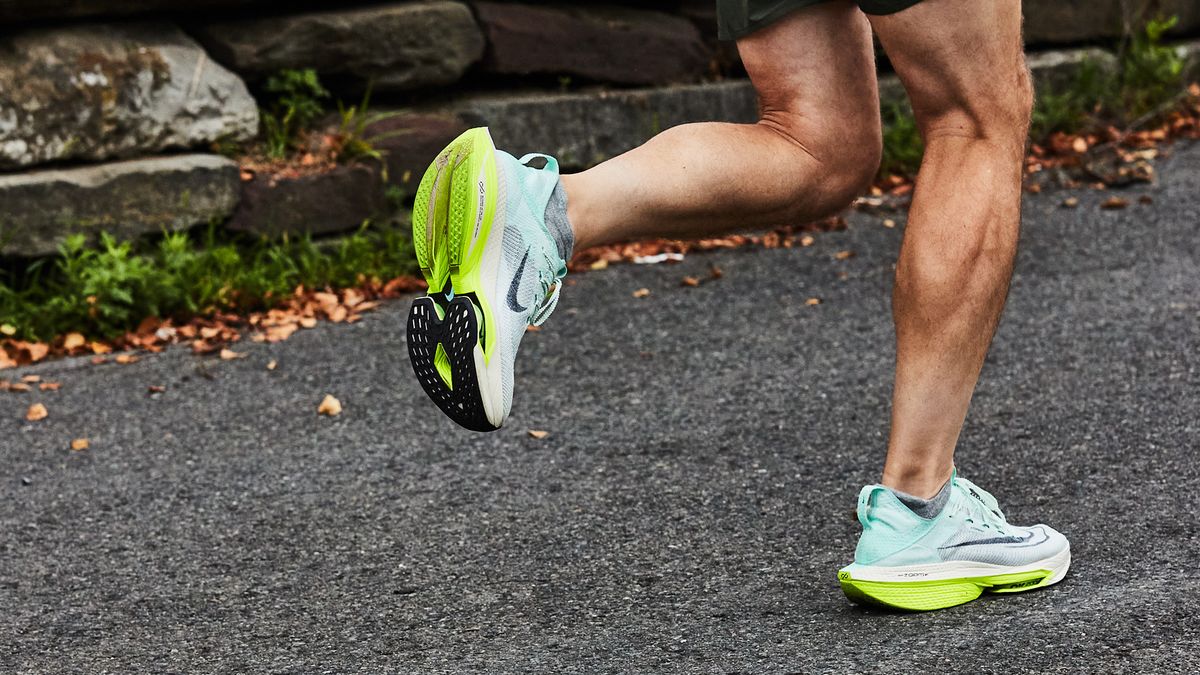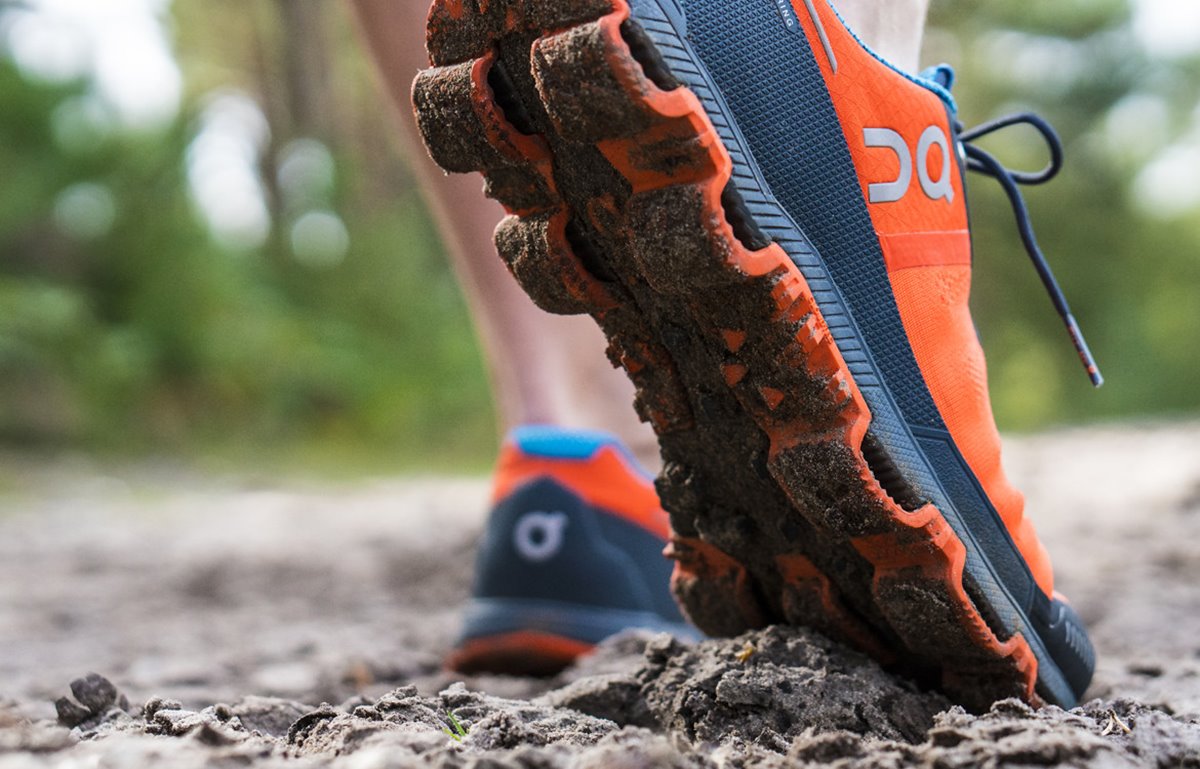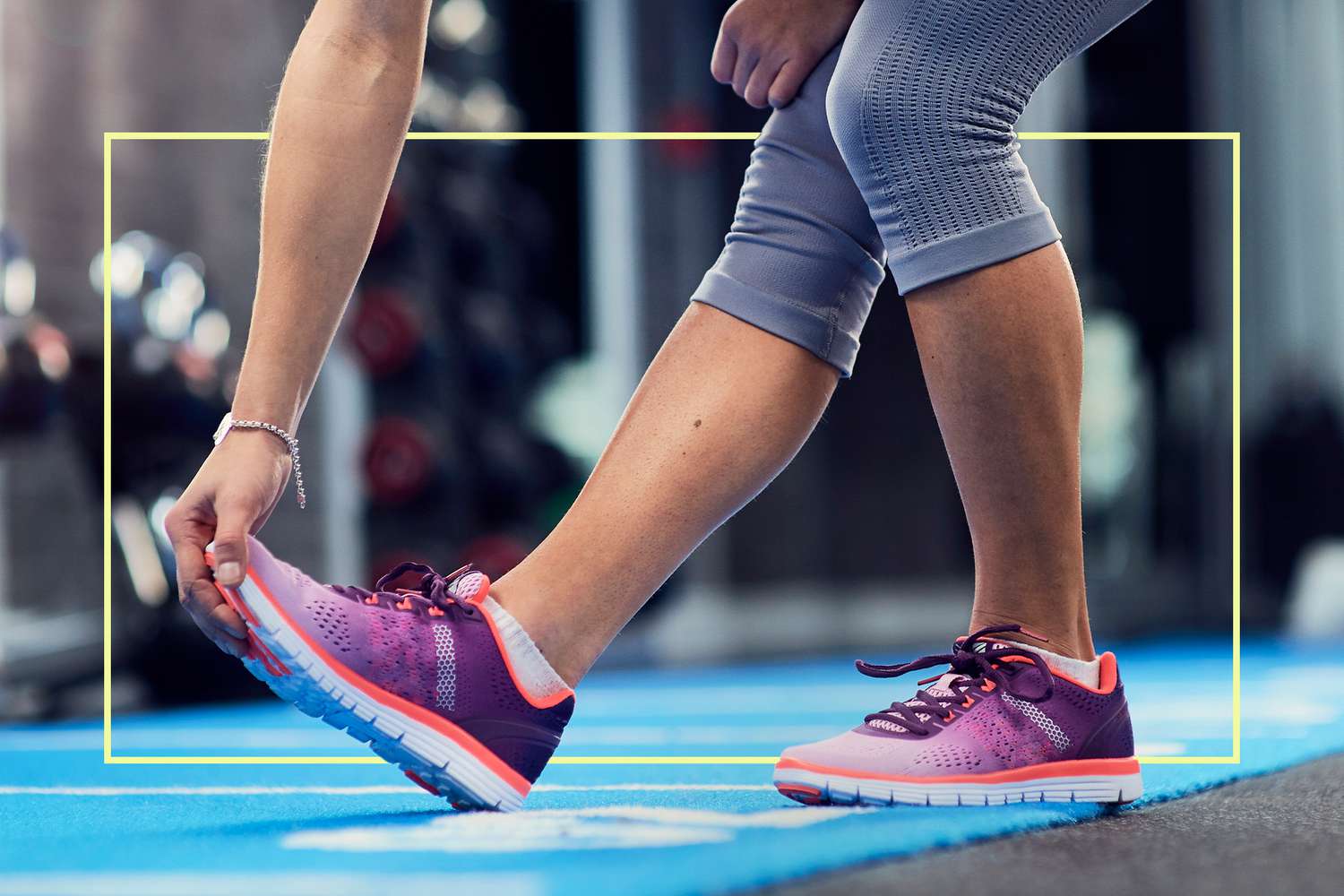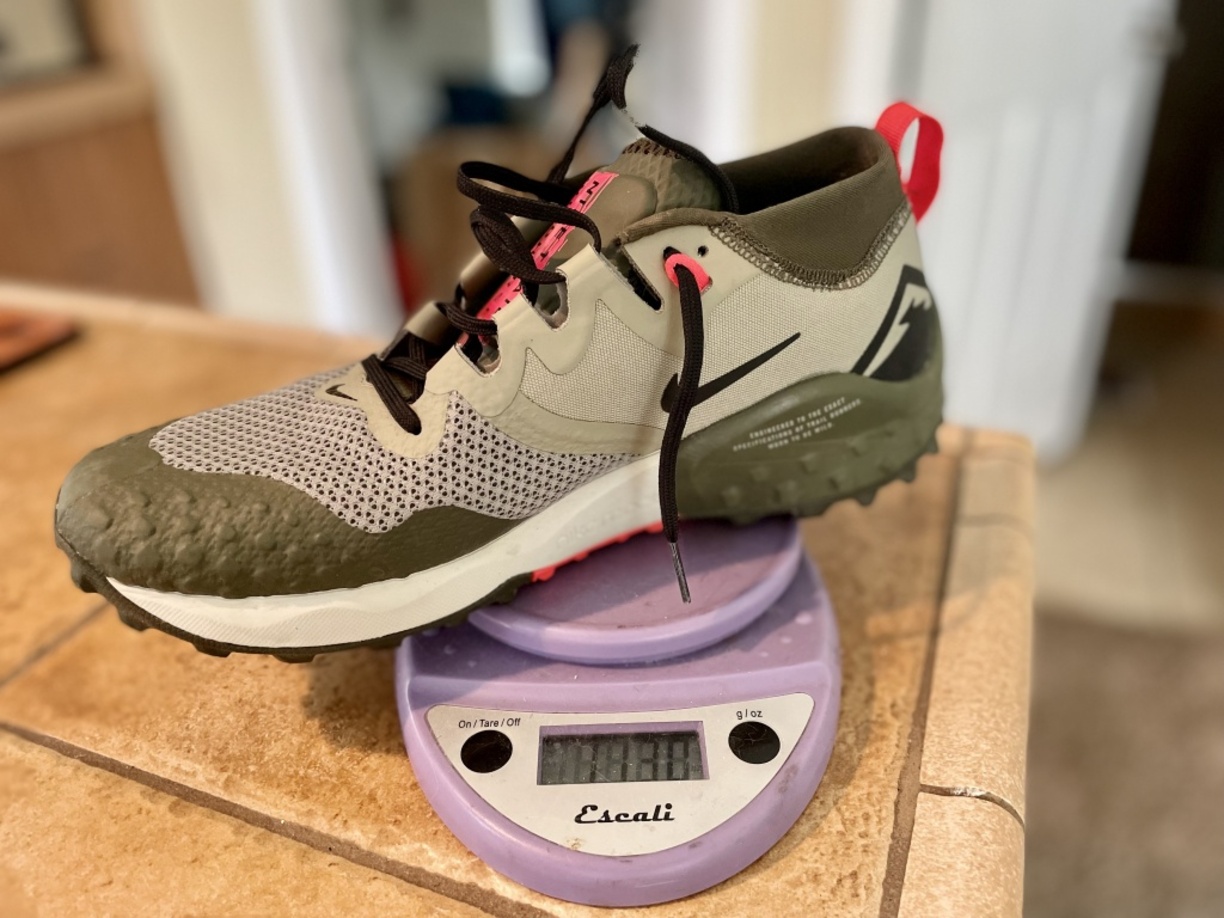

Featured
How Much Do Running Shoes Weigh
Modified: January 2, 2024
Discover the featured running shoes and find out their weight. Compare different brands and models to find the lightest ones.
Introduction
When it comes to choosing running shoes, weight is a factor that many runners consider. The weight of the shoes can directly impact your performance, comfort, and overall running experience. But how much do running shoes actually weigh? And why does the weight matter?
Whether you’re a seasoned marathon runner or just starting out on your fitness journey, understanding the factors that affect the weight of running shoes can help you make an informed decision. In this article, we’ll explore the various factors that contribute to the weight of running shoes and discuss the ideal weight range for different types of runners.
Before we delve into the specifics, let’s establish why the weight of running shoes is important. The weight of your shoes can affect your energy expenditure, running speed, and overall performance. Heavier shoes require more energy to lift with each stride, which can lead to increased fatigue and a slower pace. On the other hand, lighter shoes can provide a sense of agility, allowing you to move more efficiently and effortlessly.
Additionally, the weight of your running shoes can impact your comfort levels. Heavy shoes can feel clunky and cumbersome, causing discomfort and hindering your running form. Lighter shoes, on the other hand, can provide a more natural and responsive feel, allowing for a smoother stride and reducing the risk of discomfort or injuries.
Now that we understand the importance of shoe weight, let’s delve into the various factors that contribute to the overall weight of running shoes. By examining these factors, you’ll gain a better understanding of why certain shoes may be heavier or lighter than others.
Factors Affecting Weight of Running Shoes
Several factors contribute to the overall weight of running shoes. Understanding these factors can help you make an informed decision when choosing the right pair of shoes for your running needs. Here are some key factors that affect the weight of running shoes:
- Materials Used: The materials used in the construction of running shoes play a significant role in determining their weight. Lightweight and breathable materials, such as mesh and synthetic fabrics, are commonly used in the upper part of the shoe to reduce weight. Additionally, the type of materials used in the midsole and outsole can also impact the overall weight.
- Cushioning and Support: The amount of cushioning and support in a running shoe can affect its weight. Shoes with more cushioning often have added layers of foam or gel, which can increase their weight. However, the cushioning provides enhanced shock absorption and can be beneficial for runners who require additional support or have specific foot conditions.
- Features and Technology: Running shoes are equipped with various features and technologies that can influence their weight. Features like stability systems, arch support, and motion control mechanisms may add extra components, which can contribute to the overall weight of the shoe. On the other hand, minimalist shoes that prioritize a lightweight design may exclude some of these additional features.
- Size and Fit: The size of the shoe can also impact its weight to some extent. Larger shoe sizes will generally have more material, resulting in slightly higher weight. Additionally, the fit of the shoe can affect the overall weight perception. Shoes that are tighter or have a snug fit may feel lighter, as they provide a better connection with the feet.
It’s important to note that the weight of running shoes varies significantly depending on the specific brand, model, and intended use. Some runners prefer lighter shoes for faster-paced runs or races, while others prioritize additional cushioning and support for longer distances or trail running.
Now that we have explored the factors influencing the weight of running shoes, let’s take a closer look at the materials commonly used in the construction of running shoes and their impact on weight and performance.
Materials Used in Running Shoes
The materials used in the construction of running shoes play a crucial role in determining their weight, durability, flexibility, and overall performance. Manufacturers employ a combination of various materials to strike a balance between comfort, protection, and weight. Here are some commonly used materials in running shoes:
- Upper Materials: The upper part of the shoe is responsible for providing a secure and comfortable fit. Manufacturers often use lightweight and breathable materials, such as mesh, knit, or synthetic fabrics. These materials offer good airflow, allowing your feet to stay cool and dry during runs. Additionally, they contribute to the overall weight reduction of the shoe without compromising durability or support.
- Midsole Materials: The midsole is the layer between the outsole and the upper part of the shoe. It is primarily responsible for cushioning and shock absorption. Generally, midsole materials are made from various types of foam, such as EVA (ethylene vinyl acetate) or PU (polyurethane). These foams provide excellent energy return and impact protection while keeping the weight of the shoe relatively low.
- Outsole Materials: The outsole is the bottom part of the shoe that comes into contact with the ground. It provides traction, durability, and protection. Manufacturers use rubber compounds of different densities and patterns to enhance grip and durability. Some running shoes incorporate carbon rubber or blown rubber, which can offer high levels of durability and flexibility while minimizing weight.
- Supportive Materials: Running shoes often require additional supportive elements to enhance stability and prevent overpronation or supination. These materials may include thermoplastic urethane (TPU) overlays, heel counters, or medial posts. While these elements add some weight to the shoe, they contribute to the overall support and alignment of the foot, which can be beneficial for runners with specific needs.
The selection of materials can vary depending on the specific model, intended use, and price range of the running shoe. High-performance racing shoes may prioritize minimalistic designs, utilizing lightweight and flexible materials to reduce weight. On the other hand, long-distance or trail running shoes may incorporate more durable and protective materials to withstand rugged terrain.
When choosing running shoes, consider the materials used and the trade-offs they provide in terms of weight, comfort, durability, and performance. It’s important to find the right balance that meets your specific running needs and preferences.
Now that we have explored the materials used in running shoes, let’s discuss how cushioning and support systems contribute to the overall weight of the shoe and affect your running experience.
Cushioning and Support
Cushioning and support are essential considerations when it comes to selecting the right pair of running shoes. These factors not only impact the comfort level but also play a significant role in protecting your feet from impact forces and maintaining proper running form. However, they can also contribute to the overall weight of the shoe. Let’s delve into how cushioning and support systems affect the weight and performance of running shoes.
Cushioning: Cushioning in running shoes provides shock absorption and helps reduce the impact on your feet, knees, and joints while running. Different running shoe models offer varying levels of cushioning, depending on the intended use and the type of runner. Shoes with more cushioning tend to have additional foam or gel layers in the midsole, which can make them slightly heavier. However, the extra cushioning can provide enhanced comfort and protection, especially for long-distance runners or those with sensitive feet.
Support: Support systems in running shoes aim to promote stability, correct pronation, and prevent injuries. Overpronation and supination (when the foot rolls inward or outward excessively) can lead to various foot and leg problems. Running shoes often incorporate features like medial posts, thermoplastic urethane (TPU) overlays, or heel counters to provide additional support and help maintain proper foot alignment. While these support systems can add some weight to the shoe, they are crucial for runners who require extra stability and pronation control.
When choosing running shoes, it’s essential to consider the amount of cushioning and support that aligns with your running style and needs. Different runners have different preferences, and finding the right balance is crucial. Some runners may prefer minimalist or barefoot-style shoes with minimal cushioning and support, prioritizing a lighter-weight and more natural running experience. On the other hand, runners with specific foot conditions or those logging higher mileage may opt for shoes with additional cushioning and support.
Manufacturers are continuously innovating in cushioning and support technologies to strike a balance between weight and performance. Advancements such as lightweight foams, responsive cushioning, and targeted support systems have allowed for lighter shoes without compromising on comfort or stability.
In the next section, we will explore the impact of features and technology on the weight and performance of running shoes, helping you understand how different shoe characteristics can affect your running experience.
Features and Technology
Running shoes have evolved significantly over the years, with advancements in technology and innovative features aimed at improving performance, comfort, and protection. These features and technologies can have an impact on the weight of the shoe as well. Let’s explore some of the common features and technologies found in running shoes and their influence on weight and performance.
- Stability Systems: Many running shoes incorporate stability systems to provide support and reduce excessive pronation. These systems can include features like dual-density midsoles or medial posts. While these features enhance stability and foot alignment, they may add some weight to the shoe.
- Arch Support: Runners with high arches or flat feet may benefit from running shoes that offer targeted arch support. This support can be achieved through various technologies, such as arch bands or arch lock systems. Similar to stability systems, arch support features can contribute to the weight of the shoe.
- Energy Return: Some running shoe models utilize technology that aims to enhance energy return. These technologies, such as carbon-fiber plates or responsive foam materials, help propel runners forward by storing and releasing energy with each stride. While these advancements can improve performance, they may slightly increase the weight of the shoe.
- Breathability: Running shoes with breathable mesh uppers allow for proper airflow, helping to keep your feet cool and dry during runs. While this feature doesn’t significantly impact the weight of the shoe, it improves overall comfort and can enhance the running experience.
- Seamless Construction: Many running shoes feature seamless construction, which eliminates the need for heavy stitching and overlays. This design not only reduces weight but also minimizes the risk of irritation or discomfort caused by seams rubbing against the foot.
It’s important to note that not all features or technologies will be present in every running shoe. Manufacturers cater to different types of runners and running styles, incorporating features that align with specific needs and preferences. Some runners may prioritize lightweight designs and minimalist features, while others may value additional support or cushioning.
When selecting running shoes, consider the features and technologies that align with your running goals and individual needs. It’s essential to find a shoe that strikes the right balance between weight, comfort, and performance.
In the next section, we will explore the ongoing debate surrounding weight versus performance in running shoes and provide insights into the ideal weight range for different types of runners.
Weight vs Performance: The Debate
The weight of running shoes has long been a topic of debate among runners and experts. The ongoing discussion revolves around finding the balance between a lightweight design and optimal performance. Let’s delve into the weight versus performance debate in running shoes.
On one hand, advocates of lightweight running shoes argue that reduced weight translates to increased running efficiency and faster speeds. Lighter shoes can provide a sense of agility, allowing runners to move more freely and effortlessly. Additionally, lighter shoes require less energy to lift with each stride, which can contribute to decreased fatigue and improved performance, particularly in shorter races or speed-focused workouts.
On the other hand, proponents of slightly heavier shoes argue that additional cushioning and support can enhance comfort and reduce the risk of injuries. They believe that sacrificing some weight for superior shock absorption and stability can provide long-term benefits, especially during longer runs or races. These runners prioritize the protection and support offered by shoes with more substantial construction, even if it means sacrificing a fraction of speed.
It’s important to note that the optimal weight for running shoes can vary depending on factors such as individual running style, foot mechanics, and the type of running you engage in. There is no one-size-fits-all answer when it comes to determining the ideal weight for running shoes.
Ultimately, the choice between a lightweight or slightly heavier shoe depends on your personal preferences, running goals, and the specific terrain you’ll be running on. If you prioritize speed and short-distance races, opting for a lightweight shoe may be beneficial. However, if you value comfort and require additional cushioning and support for longer distances or varied terrain, slightly heavier shoes may be a better choice.
It’s worth experimenting with different shoe weights and styles to find what works best for you. Your comfort, running form, and overall performance should be the ultimate deciding factors in the weight versus performance debate.
Now that we’ve explored the weight and performance aspect, let’s discuss the ideal weight range for running shoes and how it can vary based on individual needs and preferences.
Ideal Weight Range for Running Shoes
When it comes to the ideal weight range for running shoes, there is no one-size-fits-all answer. The optimal weight can vary based on individual preferences, running style, and specific needs. However, understanding different weight categories and their implications can help you make an informed decision when choosing running shoes.
Here are three general weight categories for running shoes:
- Lightweight Running Shoes: These shoes typically weigh less than 10 ounces (283 grams). Lightweight shoes are often designed for speed, agility, and efficiency. They prioritize a minimalistic and streamlined construction, making them suitable for shorter races, interval training, or runners aiming for a faster pace. They provide a responsive and lightweight feel, allowing for quick turnover and enhanced ground feel. However, they may offer less cushioning and support, so they may not be as suitable for longer distances or runners who require added stability.
- Midweight Running Shoes: Midweight running shoes typically weigh between 10 to 12 ounces (283 to 340 grams). These shoes strike a balance between lightweight design and added cushioning. They are suitable for a wide range of runners and can accommodate different running distances and speeds. Midweight shoes often provide a good combination of cushioning, support, and responsiveness, making them versatile for various training sessions and races. They offer a balance between speed and comfort, appealing to runners who want moderate cushioning without compromising too much on weight.
- Heavyweight Running Shoes: Heavyweight running shoes generally weigh more than 12 ounces (340 grams). These shoes prioritize maximum cushioning, support, and durability. They are commonly designed for long-distance running, trail running, or runners who require exceptional shock absorption. Heavyweight shoes can provide excellent protection and stability, making them suitable for runners with specific foot conditions or those who prefer added cushioning during extended runs. Although heavier, these shoes excel in providing a comfortable and well-supported running experience.
It’s important to remember that these weight ranges are general guidelines, and individual shoe models may vary slightly within each category. Additionally, personal preferences and factors such as foot biomechanics, running goals, and terrain should influence your decision when selecting running shoes.
When choosing running shoes, consider your running style, distance preferences, and desired comfort and support levels. Trying on different shoes, consulting with experts or experienced runners, and seeking professional gait analysis can help you find the ideal weight range that suits your running needs and preferences.
Now that we’ve explored the ideal weight range for running shoes, let’s wrap up our discussion with a summary of the key points we’ve covered.
Lightweight Running Shoes
Lightweight running shoes are designed for runners who value speed, agility, and a more minimalistic running experience. These shoes prioritize a lightweight construction, allowing for a more responsive and fast-paced running style. Let’s explore the characteristics and benefits of lightweight running shoes.
Generally weighing less than 10 ounces (283 grams), lightweight running shoes are specifically engineered to reduce weight while still providing adequate cushioning and support. They are designed with sleek, streamlined profiles and often feature breathable mesh uppers to keep your feet cool and comfortable during runs.
One of the main advantages of lightweight running shoes is their ability to enhance running efficiency. The reduced weight of the shoes allows for quicker turnover and improved ground feel, which can result in faster running speeds. Runners who prioritize sprinting, interval training, or short-distance races may benefit from the lightweight design as it can facilitate a more natural and effortless stride.
Lightweight running shoes are often preferred by experienced runners who have developed strong running mechanics and efficient form. These shoes encourage a forefoot or midfoot strike, promoting a more efficient energy transfer and reducing the risk of injuries associated with excessive heel striking.
Despite their minimalistic design, lightweight running shoes still provide a certain level of cushioning and responsiveness. The midsole foams used in these shoes are engineered to provide adequate shock absorption and energy return without adding unnecessary weight. This balance allows runners to enjoy a comfortable and well-supported running experience over shorter distances.
It’s important to note that lightweight running shoes may not be suitable for everyone or every type of run. They may have less cushioning and support compared to midweight or heavyweight shoes, making them less suitable for longer distances or runners who require additional stability or foot protection. Runners with specific foot conditions or those logging higher mileage may consider using a more cushioned shoe to help prevent discomfort or injuries.
When choosing lightweight running shoes, consider factors such as your running style, preferred distances, and personal comfort. It’s advisable to try on different models and consult with experts to find the right fit that offers the ideal balance of weight and performance for your running needs.
Now that we’ve explored the characteristics of lightweight running shoes, let’s move on to discuss midweight running shoes and their benefits for runners.
Midweight Running Shoes
Midweight running shoes strike a balance between lightweight design and added cushioning and support, making them a popular choice among a wide range of runners. These shoes offer versatility and can cater to various distances and running speeds. Let’s delve into the characteristics and benefits of midweight running shoes.
Typically weighing between 10 to 12 ounces (283 to 340 grams), midweight running shoes provide a combination of cushioning, support, and responsiveness. They are designed to offer a comfortable and well-supported running experience without compromising too much on weight.
One of the significant advantages of midweight running shoes is their versatility. They are suitable for different types of runners, whether you’re a beginner looking for more cushioning or an experienced runner seeking a balance between weight and protection. With moderate cushioning in the midsole, these shoes can provide adequate shock absorption for longer distances while still maintaining a responsive feel.
In terms of design, midweight running shoes often feature a secure and comfortable upper construction. They may incorporate supportive overlays and features like arch support or additional stability systems to provide added support and prevent excessive pronation or supination. These design elements contribute to a more stable and controlled running experience, particularly for runners with specific foot mechanics or conditions.
Midweight running shoes are versatile enough to handle a variety of training sessions and race distances. Whether you’re planning a long run, a tempo run, or a marathon, these shoes offer the right balance of cushioning, support, and weight. They can be a reliable option for runners who don’t want the extreme lightweight design of race shoes, but also want to avoid the bulkiness of heavyweight shoes.
Another advantage of midweight running shoes is that they provide an excellent transition option for runners who are transitioning from heavier shoes to a more minimalist design. They offer a balance between comfort and lightweight feel, allowing runners to gradually adapt to a more minimalistic and efficient running style.
Ultimately, the choice of midweight running shoes is a personal one that depends on your running goals, preferences, and individual needs. Trying on different models and considering factors such as cushioning, arch support, stability, and comfort will help you find the right midweight shoe that suits your running style.
Now, let’s move on to the topic of heavyweight running shoes and their benefits for specific types of runners.
Heavyweight Running Shoes
Heavyweight running shoes are designed for runners who prioritize maximum cushioning, support, and durability. These shoes excel in providing a comfortable and well-protected running experience, especially for long-distance runners or those with specific foot conditions. Let’s delve into the characteristics and benefits of heavyweight running shoes.
Generally weighing more than 12 ounces (340 grams), heavyweight running shoes prioritize ample cushioning in the midsole. They are designed to absorb and disperse impact forces, reducing the strain on your feet, knees, and joints during long-distance runs. The increased cushioning in these shoes provides a plush and comfortable feel, allowing runners to maintain a steady pace without worrying about foot fatigue.
One of the main advantages of heavyweight running shoes is their ability to provide excellent stability and support. These shoes often incorporate features like reinforcement overlays, heel counters, and motion control mechanisms to promote proper foot alignment and prevent overpronation or supination. Runners with specific foot mechanics or conditions, such as flat feet or severe overpronation, can benefit from the added support and stability offered by heavyweight shoes.
In addition to cushioning and support, heavyweight running shoes are typically constructed using durable materials. They are designed to withstand the rigors of long-distance running and are often equipped with robust outsoles that provide excellent traction on various terrains. The durability of these shoes ensures they can withstand the repeated impact and wear associated with high-mileage training.
Heavyweight running shoes are particularly suited for long-distance runners, ultra-marathons, or runners who require extra cushioning due to sensitive feet or previous foot injuries. They provide the necessary protection and support for extended periods of running, allowing you to focus on your performance without feeling the effects of foot fatigue.
It’s important to note that the increased weight of these shoes may affect overall running speed. They are not typically recommended for short-distance races or for runners who prioritize speed over comfort. However, they can be an excellent choice for those who prioritize endurance and foot protection during their runs.
When selecting heavyweight running shoes, consider factors such as cushioning, stability features, durability, and overall comfort. Trying on different models and consulting with experts can help you find the right fit that balances the weight, cushioning, and support necessary for your specific running needs.
Now that we’ve explored the benefits of heavyweight running shoes, let’s wrap up our discussion with a summary of the key points we’ve covered.
Conclusion
When it comes to choosing running shoes, weight is an important factor to consider. The weight of the shoe directly impacts your running performance, comfort, and overall experience. Whether you prefer lightweight, midweight, or heavyweight running shoes, understanding the factors that affect their weight can help you make an informed decision.
Materials used, cushioning and support, features and technology all play a role in determining the weight of running shoes. Lightweight running shoes prioritize speed and agility, providing a minimalistic feel and allowing for quick turnover. Midweight shoes strike a balance between weight and cushioning, offering versatility for various training sessions and race distances. Heavyweight shoes prioritize maximum cushioning, stability, and durability, making them suitable for long-distance running and those needing additional support.
There is no one-size-fits-all answer to the ideal weight range for running shoes. The right choice depends on individual preferences, running style, and specific needs. It’s crucial to find the right balance that suits your running goals, comfort levels, and foot mechanics.
When selecting running shoes, it’s important to try on different models, consider factors such as cushioning, support, stability, durability, and overall comfort, and seek guidance from experts or experienced runners. Personal preference and individual needs should always take precedence in the decision-making process.
In the end, the perfect pair of running shoes is the one that allows you to run comfortably and confidently, supporting your running ambitions and helping you achieve your goals. So lace up, hit the road or trail, and enjoy the exhilarating experience of running with the right pair of shoes for you.

